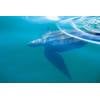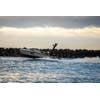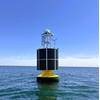Hydro-Lek HyBIS Deployed for Gas Research
Hydro-Lek’s underwater sampling and observation platform, HyBIS, was deployed during a scientific research expedition into gas hydrates in the South China Sea lead by GEOMAR Helmholtz Center for Ocean Research Kiel.
As demand for energy increases in industrialized regions of the world, so resources to produce energy within these areas are depleting. Scientists are now looking at natural gas hydrates on the ocean floor as a possible solution to this problem.
Gas hydrates form in the sea floor whenever there is enough methane and the pressure is sufficiently high and the water temperature sufficiently low. These conditions exist in the passive continental margin of the South China Sea. Plate tectonics compress vast quantities of sediments while producing natural gas and fluids that form cold seeps at the surface.
HyBIS was deployed by GEOMAR on this expedition to observe, record and sample seabed sediments to confirm the existence of active seep systems and to help scientists further understand how hydrate is formed.
HyBIS, a pneumonic for Hydraulic Benthic Interactive Sampler, enables seabed sampling at water depths of up to 6,000 meters, together with video observation. Highly robust, flexible and inexpensive, HyBIS is designed to operate in conjunction with existing deck handling and cable systems available on most research and offshore service vessels, thereby eliminating the need for additional and costly ROV deck handling equipment and crew. It enables the user to follow up marine geophysical surveys with localized observation and sampling during the same voyage.
HyBIS measures 1.5 x 1.4 x 1.8 meters high and comprises two subsea modules: an upper command module which houses hydraulic and electric power modules with thrusters, release mechanism, video and lighting and fiber-optic telemetry for instruments and sensors; and an interchangeable lower tooling module which can include a clam-shell sampling grab, a five-function manipulator arm, an instrument recovery winch or an ocean-bottom seismometer deployment module. As the system is highly adaptable there are no limits for designing new, custom-made modules for specific applications. Hydro-Lek has used robust and corrosion resistant materials throughout the manufacture of HyBIS designed to withstand the high pressures and harsh environment found at depths of up to 6,000 meters. Electrically-driven thrusters enable the vehicle to be maneuvered above seabed under its own power.
Unlike a conventional ROV, HyBIS does not have any floatation; rather it is suspended by its umbilical cable directly from the ship with the advantage that it can recover or deploy a payload up to its own weight of 750 kilograms.
“This first deployment of HyBIS was a complete success. On its first dive it was possible to confirm the existence of an active seep system. On the fifth dive we recovered a large block of carbonate. In addition, we recorded many hours of video observation of the seafloor which allowed us to correctly interpret side sonar data and to distinguish between active and inactive seeps” said Chief Scientist, Christian Berndt at GEOMAR.
hydro-lek.com















 February 2024
February 2024



